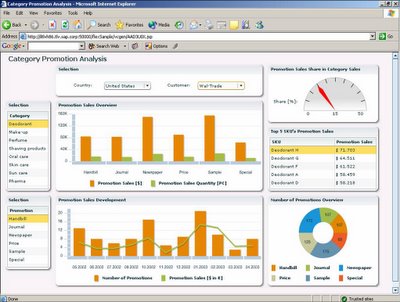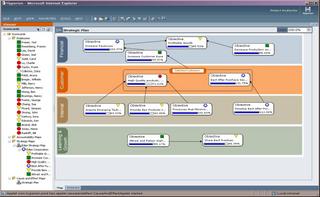Dear Readers,
I must apologize for not blogging in a whole month. A lot has changed in that time! I am pleased to share with all of my readers that I have recently joined SAP Labs, LLC as Director, Solution Marketing for SAP Analytics and am very excited to share some of what we are doing with you.
What is SAP Analytics? SAP Analytics is a suite of composite applications built on the SAP NetWeaver platform to enable seamless integration of analysis, transactions, and collaborative steps across the entire value network. For as many years as I was a consultant, I wondered why reporting, OLAP, analysis, etc. were disconnected from the CRM and ERP applications that business users worked on all day. If I were a sales rep working on my pipeline, couldn't I do a much better job if I had access to aggregated, analytical information with important sales KPIs in the same place that I kept my opportunity list? Wouldn't I be more likely to take the appropriate action, like moving my high value deal with a high close probability to the top of my priority list, if I had this rich insight right in front of me?
This is the premise of SAP Analytics. While no one questions the value of a stand-alone report or ad hoc analysis conducted using a BI tool, we believe that it can be even more valuable to the business users to gain analytical insight at the exact moment when they need it the most: at the point where they make their decisions. So, in keeping with NetWeaver and Enterprise Services Architecture, we're breaking down the traditional functional application barriers between ERP and CRM and BI and CPM, and giving business users the opportunity to use the most relevant, actionable analytical information we can provide them in the form of composite applications. Take a look at one of the screenshots below of a category promotion analysis application:

The graphical richness and interactivity of SAP Analytics is provided by our partnership with Macromedia (now Adobe), where we are leveraging the rich internet applications technology of their Flex product line. Even cooler, these applications can be constructed very easily by business users using the model-driven approach of our Visual Composer technology.
I will be writing about these technologies and many other things in much more detail in the coming months. I look forward to sharing more with you. In the meanwhile, I encourage you to take a look at the following link on the SAP.com website to learn more:
Best Regards,
Nenshad Bardoliwalla







